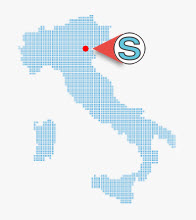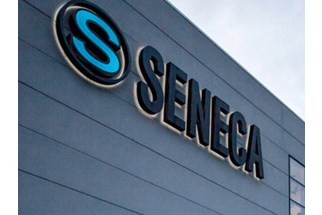SENECA and Gowan Adria for infrastructure diagnostics and seismic event monitoring
GOWAN ADRIA belongs to an American company operating worldwide in the agricultural sector with the production of copper-based fungicides. In Italy, production is carried out in 4 plants (Adria, Aprilia, Bussi sul Tirino, and Novara). Gowan Adria has chosen the control hardware, system engineering, and application software development provided by SENECA to implement a monitoring system for measuring seismic events and studying the dynamic behavior of its Adria plant. A seismic monitoring system provides objective data on the effects of an earthquake on property and infrastructure, making it possible to protect human lives, real-time management of prevention and warning systems, and rapid production activities.
On the strength of these premises and a specific focus on safety, Gowan Adria, a world leader in the agro-pharmaceuticals market, adopted Seneca technology and engineering for its Adria plant in order to implement a seismic event monitoring system. The system detects the event at three points strategically located in the plant, channeling the alarm and pre-alarm signals to the control system at a single central node.

Gowan's Adria plant covers 73,000 square meters and can produce up to 22,000 tonnes/year of copper-based fungicides.
The study of seismic motion
In designing the monitoring system, Seneca's engineering division first of all distinguished between microseismic activity characterized by vibrations of weak amplitude and very large periods such as not to be perceived by the most common recording instruments and strong motion activity. The latter is characterized by vibrations of such amplitude and period as to produce damage to the environment and infrastructure and is detectable with the most common instruments. Assessing the effects of strong motion activity on a given site requires a quantitative and objective description of the site's seismic motion, including the orthogonal components of translation and rotation. The translation components are generally measured and recorded in terms of acceleration (accelerograms), for example, in analog or numerical form. In this case, a sufficiently small step size, e.g. 0.01 s, is required to adequately represent each peak or inversion.
The information useful for engineering purposes to represent the seismic motion at the site concerns amplitude, frequency content, and duration. This information must be obtained from the recording but can be summarised in a series of parameters (seismic motion parameters). Using appropriate laws (attenuation laws), it is possible to predict how these parameters vary with epicentral distance. Ultimately, the seismic parameters that can be used are many: some focus on only one aspect of the seismic motion, others on more than one, however, it is always advisable to use more than one parameter to characterize the seismic motion at the site, taking care to choose those that best highlight the aspect of the motion that is of interest for the problem under examination.
The proposed solution
For the acquisition of the motion caused by a possible earthquake, the Seneca engineering team identified the Dytran 7503D1 vibration sensor as the ideal solution. It is a triaxial MEMS accelerometer with variable capacitance and high accuracy The sensor combines an integrated accelerometer chip with a micro-drive, a low-impedance buffer, and a differential output for low-level acceleration measurements. The sensor detects vibrations in 3 axes (x,y,z), in a range of ± 5g, with a maximum frequency of 400 Hz and an analog output of -5 Vdc for each axis. A 'Strong Motion' seismic motion, characterized by vibrations of such amplitude and period as to produce damage to the environment and infrastructure, has amplitudes between 0.001g and 1g and frequencies from 0.06Hz to 25 Hz. Considering these parameters, Dytran 7503D1 has adequate characteristics to detect seismic events.
At each acquisition point, the accelerometer is connected to a SENECA Z-8AI data acquisition module. The Z-8AI is a module with a ModBUS RTU interface for handling up to 8 analog voltage or current signals in the ± 2.5 Vdc, ± 10 Vdc and ± 20 mA ranges with 16-bit resolution and 10 ms measurement update time. The module's auxiliary power supply can supply all 8 current loops simultaneously. The isolation of the inputs from the remaining low-voltage loops is 1,500 Vac.
The three values read by the module (1 for each sensor axis) are sampled by a local CPU (Seneca Z-TWS11) which filters the signals in amplitude and duration, with two pre-alarm and alarm thresholds. The Z-TWS11 is a multi-function, multi-protocol controller programmable via the Straton IEC 61131-1 SoftPLC environment. The controller also has two onboard 16-bit analog inputs that can be configured in voltage or current and can realize expandable automation systems with ModBUS / Ethernet I/O modules. The Z-TWS11's high connectivity is provided by 1 front RJ45 10/100 Mbps Ethernet port, 1 RS485 port, 1 RS232/RS485 port, and 1 side micro USB port. By including a Z-TWS11 unit for each sensing point, acceleration signal processing is made more complete and accurate.

Functional diagram of the seismic survey system
Parameter and alarm management
Alarms, alerts, and plant parameters are fundamental information for any monitoring system. In this case, they are used to prevent seismic movements that could lead to critical failures, injure an operator or stop production. The Seneca technology adopted underpins a centralized PLC/HMI alarm system that communicates via radio with the peripheral areas of the plant.
For each acquisition point, a Seneca Z-AIR-1 radio system has been installed, a simplex/half duplex, 868 - 870 MHz radio modem with an integrated antenna that transfers the information to a central node in the plant. At this point, via the Seneca VISUAL4 terminal, Gowan maintenance technicians are enabled to set the amplitude and duration filtering parameters, in order to activate the pre-alarm and alarm signals, which in turn are relayed to a digital relay output module with an RS485 ModBUS interface (Seneca Z-D-OUT). VISUAL4 is a 7" 16 million color touchscreen HMI terminal with 2 serial ports and 1 Fast Ethernet port. Robust and suitable for all types of industrial applications VISUAL4 works in conjunction with the installed data acquisition, control, and transmission systems.
The three acquisition nodes have been fitted with a polycarbonate control cabinet suitable for outdoor installation. The switchboard is equipped with a battery charger and a 4.7 Ah battery to guarantee operation for 10 minutes even in the absence of the main power supply. The accelerometer is installed outside the switchboard and fixed in a solid and stable manner to a structure that is not subject to 'spurious' vibrations. The system antenna is also suitably positioned to allow communication with the central radio point.

Control cabinet for local seismic motion detection. SENECA's management electronics are based on SoftPLC Z-TWS11 and data acquisition module Z-8AI
Benefits of the implemented system
- Functional and strategic role structure implemented by a single supplier
- Structural monitoring of the plant
- Prediction of structural responses in reaction to critical events
- Monitoring of plant operating conditions
- Raising the level of safety
- Ability to make quick informed decisions in the event of an earthquake
- Capture information to trigger preventive and predictive maintenance actions
- Protection and assurance of investments and machinery


 FR
FR










